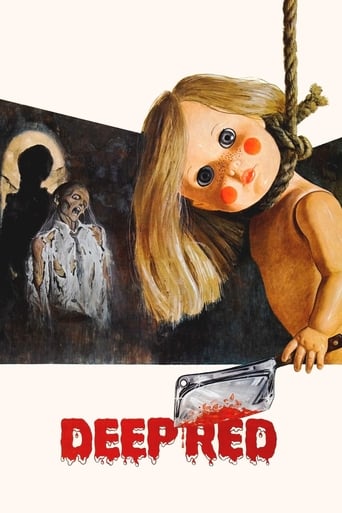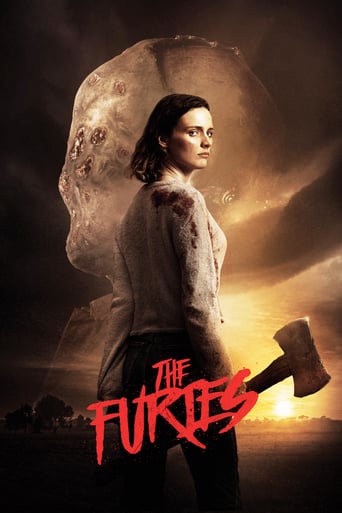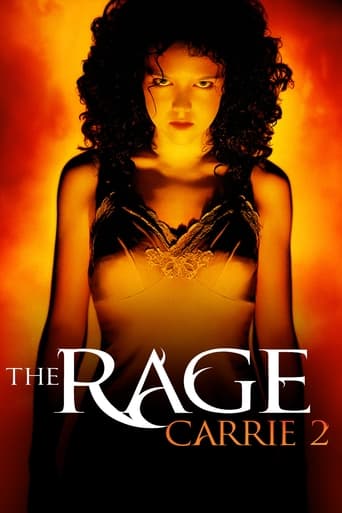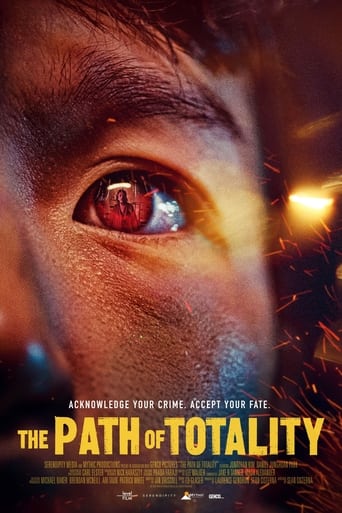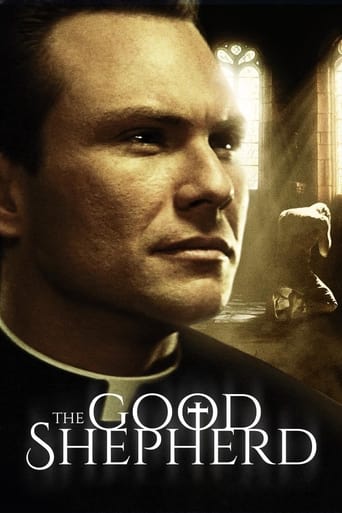Deep Red (1976)
One night, musician Marcus Daly, looking up from the street below, witnesses the brutal axe murder of a woman in her apartment. Racing to the scene, he just manages to miss the perpetrator... or so he thinks.
Watch Trailer
Cast


Similar titles
Reviews
Instant Favorite.
I wanted to but couldn't!
A movie that not only functions as a solid scarefest but a razor-sharp satire.
The story, direction, characters, and writing/dialogue is akin to taking a tranquilizer shot to the neck, but everything else was so well done.
Directed by a true master of film, Dario Argento, this one has it all. The weirdly beautiful staged murders-the death of the psychic at the beginning in particular-mixed with the usual giallo quirky characters make this one a journey into profoundo rosso horror. Bizarre imagery, the usual Argento use of light and color, as well as good acting, make for a film for horror connoisseurs. A giallo for those who have never seen a giallo. Sure, some plot discrepancies such as the final showdown when the two main characters split up, knowing that the killer is in the building with them; don't you just hate it when characters have not made an effort to study the rules for surviving a horror movie? Good pacing and script make for an enjoyable horror classic. Cat lovers beware. The scene with the informant at the monastery is not for cat lovers.
Dario Argento is the prince of the stylish Italian screamer, a filmmaker of such superior technical skill that often his uncanny sense of place, knack at combining location with ambiance, and ability at staging an extravagant, bloody crime scene takes precedence over his murder-mystery plots. With "Deep Red", which Argento co-wrote with Bernardino Zapponi, the master director stumbles a bit. His methodical pacing and mounting of the story is probably akin to Hitchcock--Hitch took his time with his mysteries, too--and both men are nearly unequaled in the art of the visual over the verbal, but overstretching scenes such as the investigation of a weathered old building or a school at night are dawdled over until impatience sets in. David Hemmings plays a jazz pianist and music teacher in Rome who witnesses a murder, that of a psychic who saw death coming but not necessarily to herself; he reports it to the police, however a missing part of the investigation--the disappearance of a painting Hemmings saw at the scene of the crime--intrigues him enough to pursue the killer on his own. The double-reveal finale isn't especially clever (it takes Hemmings too long to figure out the flaw in the first reveal), although it does allow Argento to stage an additional blood-red sequence that boasts macabre showmanship and an amusingly twisted imagination. Hemmings, less callow here and more handsome than usual, does a lot of sleuthing but not much real acting; supporting cast solid. For die-hard genre buffs, good stuff. Watch out for that mechanical clown! ** from ****
"Deep Red" stars Blow-Up's David Hemmings as a music professor who investigates a series of murders. The film has a famous and influential score by the band 'Goblin.' Argento had originally contracted jazz composer Giorgio Gaslini (Antonioni's La Notte, 1961), to score but was dissatisfied with the results. Failing to secure Pink Floyd (Antonioni's Zabriskie Point, 1970), he discovered Goblin. The score is the perfect complement to Argento's visuals; a recurring lullaby from the killer's troubled past develops to gutsy organ rock as the story progresses. Written by Argento and Bernardino Zapponi (frequent Fellini scribe), Zapponi stated the inspiration for the murders sprung from discussions about what were the most painful injuries that an audience could relate too. Almost everyone has at some point accidentally struck furniture or been scalded by hot water, but not many have experienced being shot. An arresting credit sequence grabs the attention; the menacing score is alternated with the sounds of a child's melody. A murder is committed (suggested by shadows) in a room on Christmas Day, a bloodied knife falls to the floor and a child's feet step into the frame. Cut! Argento zooms in on Marcus after an unsatisfying band rehearsal; "Maybe a little too good. Too clean. Yes, too precise. Too formal. It should be more trashy. See what I mean? Remember that this sort of jazz came out of the brothels." This is perhaps the first instance of 'self-reflexivity' in Argento's films. However before Marcus can even finish this speech, Argento tracks into a room where a parapsychology conference is taking place. At the conference Giordani's discussion on telepathy in animals' is little more than the pseudo- science from his 'Four Flies On Grey Velvet' (prefiguring themes to appear later in Phenomena). Argento, formally completing the opening sequence, zooms out of the conference where the door's surrounding red drapes close before the camera. This succession of shots tracking and zooming in on subjects creates an unsettling mood.Later, Marc catches sight of what seems to be a strange painting in the hall of a murdered woman's apartment. It transpires that the painting was a mirror in which the face of the murderer was reflected, and this is how Marc's ability to see is brought into question. Images aren't always 'fixed,' what Argento presents is a world of visual indeterminacy.Marcus walks past the bar where Carlo works as a musician, which Argento bases on Edward Hopper's painting "Nighthawks" (1942). It draws attention to the fact these eerily empty streets are not realistic. Here Marcus and Carlo have the discussion; " maybe the painting was made to disappear, because it represented something important." At the crime scene, Marcus is introduced to a bubbly reporter, Gianna who publishes his picture in the local newspaper, setting in motion the killer's pursuit of Marcus. Throughout the film, Argento challenges Marcus's masculinity through a series of farcical encounters with Gianna.Looking for Carlo, Marcus locates him at his lover Massimo's apartment. Carlo's secret is out and he's clearly resentful. Carlo declares; "Good old Carlo, he's not only a drunk but a 'faggot' as well." Since Marcus is so used to having his masculinity called into question, he doesn't seem to react to Carlo's secret. Gay characters frequently appear in Argento films, however since Argento suspects everyone equally, they're rarely revealed to be the murderers.A classic 'Giallo' set piece begins with the creepy ornament of a toy baby hanging from a rope. Soon the lights go out and a ladies birds turn against her. The killer fills a hot bathtub and gives the woman a sadistic scalding. Falling to the floor she scribbles with her finger a note on her steam-coated walls. Later, Giordani arrives at the house where he meets the maid, who cleans the blood off the bathroom sink. The anticipation is agonising waiting for Giordani to find the message. Finally the bathroom fills with hot steam and the message on the wall reappears: "IT WAS." As if this anticipation weren't gruelling enough, Argento continues to leave us in the dark.Playing around with Antonioni's Blow-Up, where the truth was inscribed in a photograph of a potential crime scene; truth in Deep Red is stamped in the memory of Marcus. Marcus solves the identity of the film's murderer as he makes one final trip down the hall of the first crime scene, where what was first thought to be a missing painting was in fact the killer's reflection in a mirror. Marcus makes the final connection just as he turns to greet the killer In the last shot Marcus is forced to stare at his reflection in a pool of her blood emphasising the 'relentlessness of the gaze' and the importance of 'looking' in order to get at the truth.Deep Red was Argento's first full-fledged masterpiece, a thriller where Argento transcended the trashy material with the remarkable formalism of his camera. He also performs some remarkable visual flourishes; tracking shots and edits such as subjective POV to sudden-close up's, that make Deep Red linger in the memory.
Similar to a lot of Argento's crime murder mysteries, Deep Red pushes the boundaries one step further with gory murder scenes and iconic deaths. Deep Red is very similar to most of Argento's films, only adding a new story, but it is a good story at that. Very engaging and also quite terrifying, the next time you see someone wear a black raincoat, you better hope they are not wielding a meat cleaver underneath it. A good Italian horror, that many will find similar to Dario Argento's other works. But if you are a fan of Argento's, horror or mystery, then this film will be for you. Don't expect the story to deviate out of the Argento template, but nonetheless you should be thoroughly engrossed for this extremely long gore fest.

